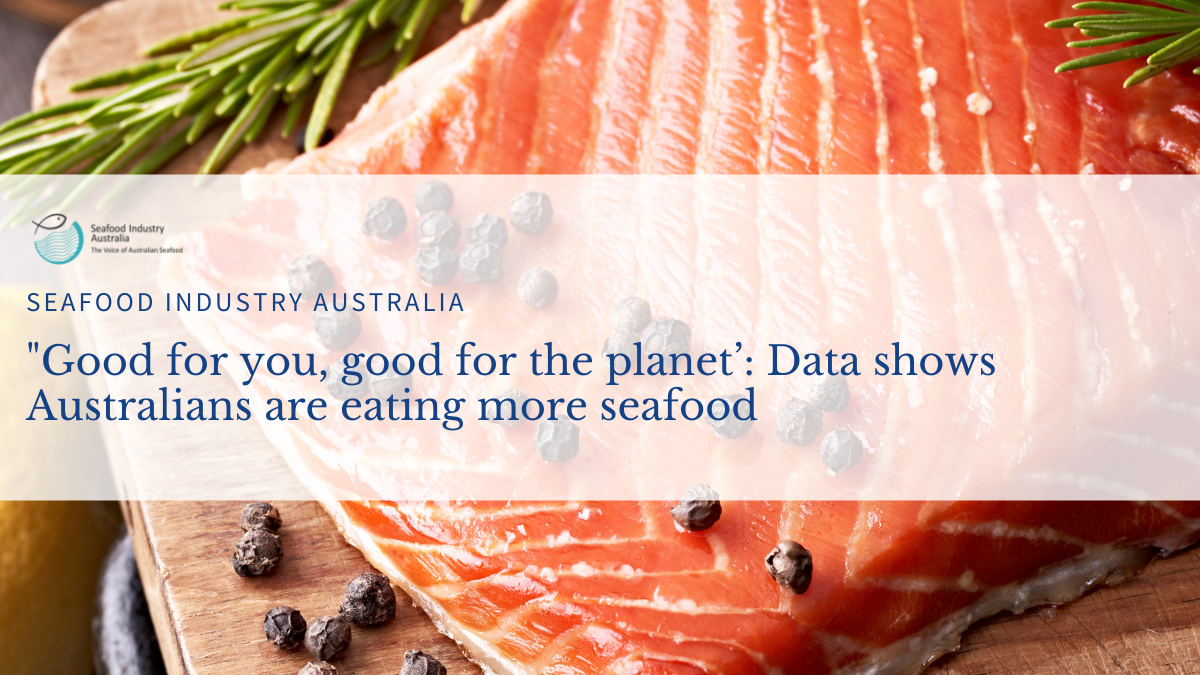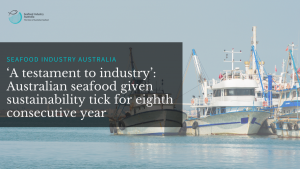
“Good for you, good for the planet’: Data shows Australians are eating more seafood
Seafood Industry Australia (SIA) has welcomed the release of the Australian Fisheries and Aquaculture Statistics 2021, (2022) which has shown an increase in seafood consumption around the country.
It’s no secret the Australian seafood industry has faced a challenging few years, however the release of this report shows the industry is steadily moving forward and that needs to be celebrated.
Australians consumed around 356,000 tonnes of seafood in 2020–21, which is equivalent to 13.9 kilograms per person. This is up 1.5 kilograms per person from 12.4 kilograms per person in 2019-20, and down from a high of 15.5 in 2003-4. This figure includes imported seafood products which accounted for 62 per cent of consumption, down from 66 per cent in previous years.
It’s wonderful to see an increase in seafood consumption, and we thank Australian consumers for their ongoing support of our great, Australian seafood producers. Especially through what has been a difficult few years for industry, and for listening to our requests to “Eat more Aussie seafood”.
Congratulations to Australia’s aquaculture sector maintained steady growth, with the sector’s GVP growing 9% in 2020-21 to $1.73 billion accounting for 56% of the industry’s GVP. This growth can be largely attributed to Tasmania’s growing Atlantic Salmon industry and Queensland’s prawn production.
Over the last two decades we’ve seen Australia’s aquaculture sector grow, which has helped to boost overall fisheries production. In recent years, our aquaculture sector has broadened the composition of species produced, with an increased emphasis on prawns and finfish varieties, like barramundi and kingfish. Australia’s aquaculture sector has a bright future as it continues to set international benchmarks by providing fresh, high-quality, sustainable seafood year-round, while meeting and exceeding regulatory requirements.
In contrast, the GVP of wild-catch species decreased by 12 per cent to $1.4 billion in 2020–21, largely due to lower prices received for rock lobster in export markets. Lower rock lobster production value was driven by trade and pandemic disruptions continuing to limit opportunities in export markets.
Overall, the GVP of Australian fishery and aquaculture in 2020–21 decreased by 1 per cent to $3.09 billion, which was an anticipated results of the trade and pandemic disruptions.
The Australian Fisheries and Aquaculture Statistics 2021 is supported by funding from the Fisheries Research and Development Corporation on behalf of the Australian Government.
<ENDS>




